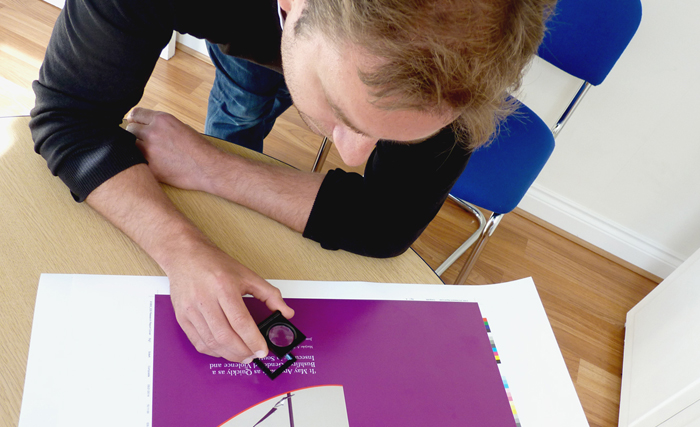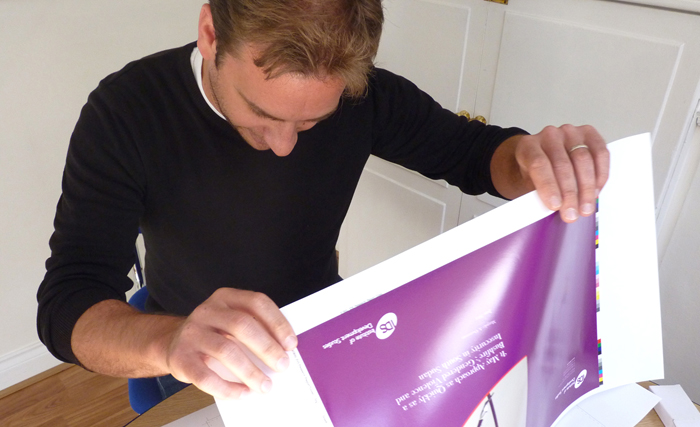The proofing process can be a lengthy task and many businesses never really appreciate why their printers or print management companies ask them so many times to check the proof before they finally sign off – so here we have a few tips to understanding why that all important proof is exactly that!
Your proof is there to give you the opportunity to analyse your content and artwork and make any necessary alterations prior to going to press. It is one of the most important steps involved in the printing process - It is vital that you check it over and ensure any amendments have been applied and everything (font, colour, logo, graphics, and layout) is as you want it. This way you avoid any disappointment and potential costs incurred from a reprint.

Print ready PDF proof:
The PDF proof has progressively become the more precise form of proof and generally considered the most popular method as it is cost effective, convenient and a faster way of receiving your proof.
In order to produce a print ready PDF the artwork has to go through a raster image processor (RIP) or ‘ripping process’ which in simple terms prepares and coverts the file ready for print. This ripping process can at times cause the artwork to shift from its original state so it is essential to check this over thoroughly.
Company services manager Claudine explains…“Here at Nexus, we check all proofs as thoroughly as possible, but at times we may not fully understand the content of your documents, especially if they are of a specialist or technical nature. Therefore it is essential that they are checked by the client to ensure that no wording etc. has been inadvertently altered by our spell check process”.
The PDF method however is not always the best option for representing the true colour of a document. Without a smart colour calibration it is difficult to represent an accurate colour which will print equally to the PDF. Having a print management company overseeing this service will ensure that the colours and finishes are clearly explained in order to help manage the expectations of the client when it comes to delivering the finished product. 
Upon receiving your PDF it can be worth getting a fresh eye to look over the content and confirm that everything is as it should be. Every time you make a change or adjustment, no matter how small, you need to be prepared to receive a follow up proof confirming this.
Now, we know all too well that the continual back and forth in proofing can be an irritating process but it’s worth remembering if the adjustments are important enough to make in the first place they should be important enough to double and triple check on the proof. If you choose to sign off without properly checking you could risk an additional charge for reprint should this be required and in turn miss your deadline.
Wet proof:
A wet proof is the most accurate proof you can receive as it is produced in exactly the same way as the final product and produced on the same material you’ll eventually print it on. Although this option will provide you with a clear and crisp example of your work it does also entail a fair amount of time due to the lengthy procedures involved in preparing the machines and printing plates. In offset printing, before a job can be printed, the document must be converted onto printing plates (lithographic plates - often made from aluminium).
On a four colour printing process (CMYK) for example, a printing plate will be required for each of the four separate colours – you can quickly begin to appreciate the lengthy process involved in producing just a single proof. This option is often used when the client is wary of how the colour of the document will look or for larger documents containing many images and brand colours.
An approximate cost for this would be about £250+VAT subject to the scale of the job.
Press pass proof:
One of the more common proofs used. This occurs at the printing press stage - the litho machine and ink will be lined up prepared for print however before the print run is given the go ahead, a couple of runs will go through the machine and a press pass check will be carried out to ensure the colour is as it should be. Do bear in mind however, that any text or image changes required at this stage will be chargeable and should only be used as a check for colour quality.
Hopefully this taster has helped you get to grips with the importance of the proof but if you've any unswered questions why not keep an eye out for our ‘Ultimate Guide to Printing’, full of jargon busting tips and advice.
Now, go check that proof!



